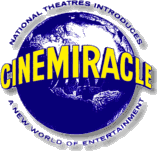
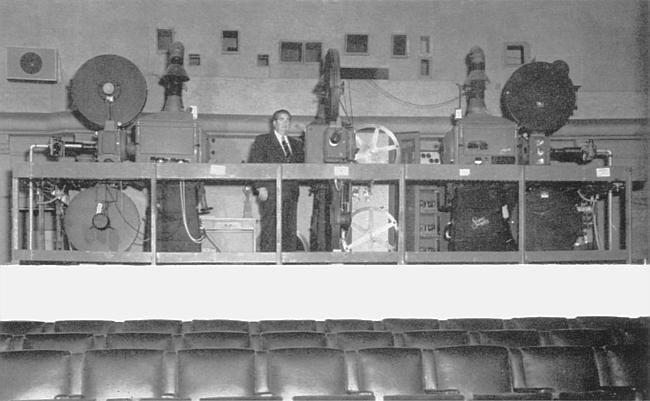
Seen above is Russell H. McCullough, the man whose name appears on most of the Cinemiracle patents. McCullough was director of research and development for National Theatres. The photograph appears to be from a demonstration of the system at the Melrose Theatre in Los Angeles. The Melrose, part of National Theatres' chain, was a spacious house and was used for testing and demonstrations. This projection setup was referred to as a single projection booth, but no theatre in existence could use their regular booth for Cinemiracle. A new booth, set for perfect head-on projection was required, just as it was for Cinerama. Note that the lenses of the "A" and "C" projectors point to mirrors that flip their images to reverse the horizontal flipping in the camera.. The Cinemiracle screen was made of conventional seamless material and was substantially less curved than that of Cinerama, being about 120 degrees instead of 146. It is the Curator's very strong opinion that the use of a 120 degree screen substantially reduces the realism obtained with a 146 degree screen. The benefit of the 120 degree screen is that cross reflections are not as severe, thus the louvre type screen used in Cinerama wasn't necessary. The Cinerama screen design was better, but it was more costly and was covered by patents that prevented others from using it. Behind and to the right of the center projector is the sound reproducer. The projectors could hold 8,000 foot reels. Cinemiracle's sound system was developed by RCA and used some of the first solid state amplifiers in theatrical motion pictures.
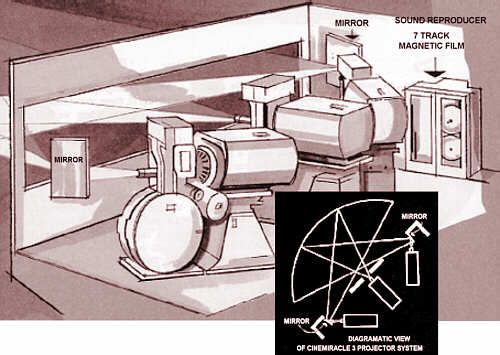
This promotional illustration of the method intended for Cinemiracle
projection differs from what materialized. (see previous illustration).
Most theatres running Cinemiracle received less than a full makeover, which
reduced the showmanship of the presentation to a shadow of its more established
cousin, Cinerama.
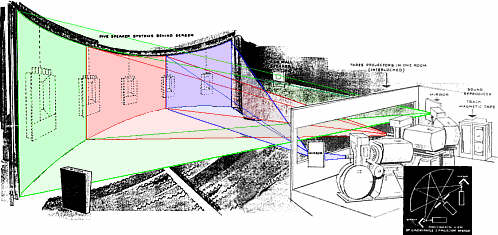
Give an artist a French curve and you've got yourself a picture of a wide, wide, wide screen.
Cinemiracle was used in the production of just one travelogue,
Windjammer, produced by Louis DeRochemont and
directed by his son Louis DeRochemont III, (we have no idea where Louis
II went). DeRochemont the father, had previously done Cinerama
Holiday, the second Cinerama travelogue, and had directed early
Todd-AO tests, including The Miracle of Todd-AO. Jack Warner had entered into an agreement in principle to produce a film entitled The Miracle in Cinemiracle, and Cinemiracle Corporation made a lot of noise about it. The Miracle was ultimately produced in 1959 in Technirama. It would seem that Jack Warner agreed to produce a lot of movies in just about any new system that came along. He never forgot that he got beat out on CinemaScope.
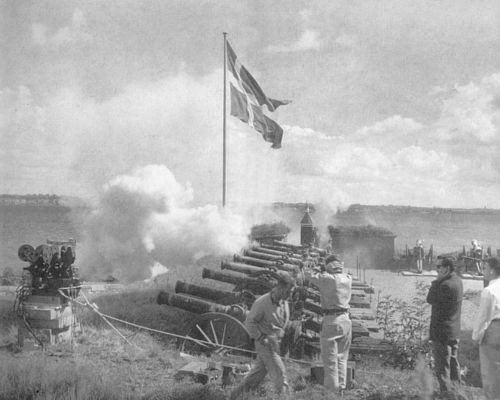 Cinemiracle
Cinemiracle shoots photographs a cannon volley at Kronborg Castle in Denmark.
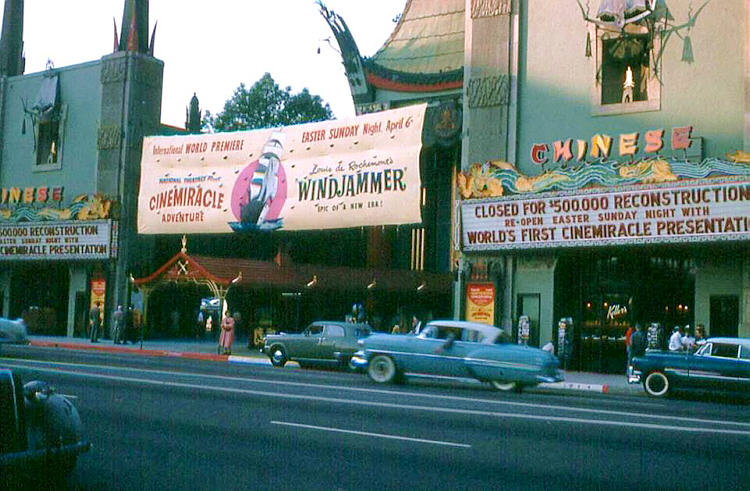
Though National Theatres claimed that it would cost about $2000 to temporarily install Cinemiracle, Sid Grauman apparently couldn't get such a good deal.
Photo Courtesy of Gerardo Paron
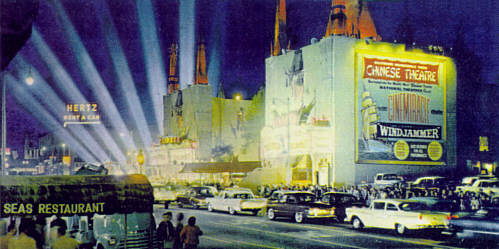
Cinemiracle makes its first public appearance at Graumann's Chinese Theatre in Los Angeles.
 | 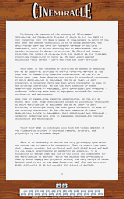 Cinemiracle Internal Memorandum (Over 25 pages of inside stuff!) |  |
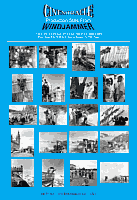 Windjammer High-Res Gallery |


E-mail the author
CLICK HERE
©1996 - 2004 The American WideScreen Museum
http://www.widescreenmuseum.com
Martin Hart, Curator